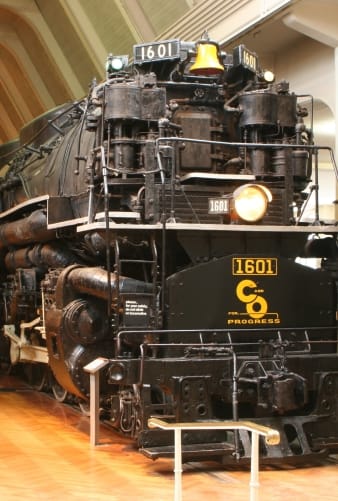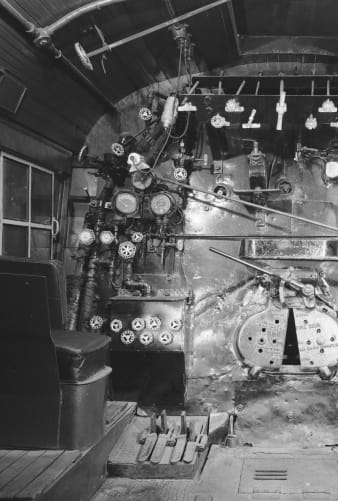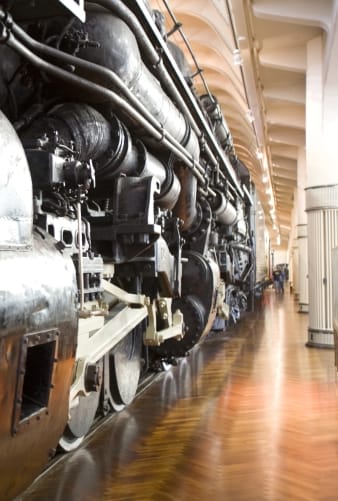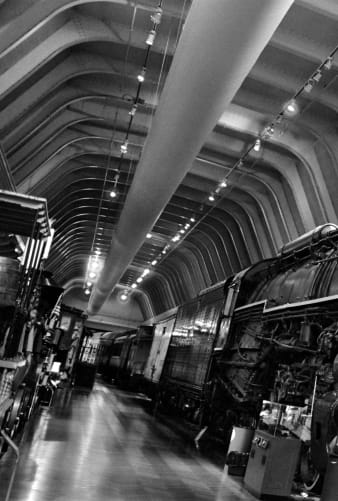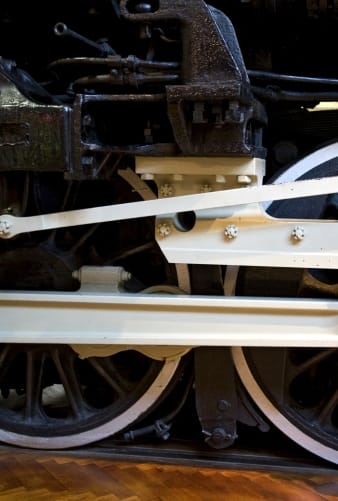
Popular Research Topics
The Allegheny Locomotive
Why is it called the “Allegheny”?
The H-8 class was designed to haul heavy trains over the steep grades of the Allegheny Mountains—especially the route between Hinton, West Virginia and Clifton Forge, Virginia.
How many were originally made? How many are still in existence?
Lima Locomotive Works, of Lima, Ohio, made 60 Alleghenies for the Chesapeake & Ohio Railway from 1941-1948, and locomotive #1601 was the second one built. The Virginian Railway purchased 8 Alleghenies from Lima Locomotive works in 1945. Only 2 Alleghenies survive: 1601, here at The Henry Ford, and 1604, at the Baltimore & Ohio Railroad Museum in Baltimore, Maryland.

What are the size, speed, strength and original cost of the Allegheny?
The Allegheny is 125-ft long, 11-ft 2-in wide, 16-ft 5 ½-in tall and weighs approximately 771,000-lbs. It could pull 160 coal cars, each with a 60-ton load, and if only pulling passenger cars, could run at 60 mph. 1601’s original price was $230,663.
When were the Alleghenies retired?
The C&O began replacing these steam locomotives with diesels in 1952; all were retired by 1956. 1601 was donated to The Henry Ford and was presented on July 9, 1956.
How did they get it into the museum?
1601 was brought up to the Detroit area “cold” (not under its own power) on the rear of a C&O freight train. It took three attempts to get 1601 into the museum. On the first attempt the locomotive derailed on the railroad tracks behind the museum. After removing its main and side rods it was time for a second attempt. This time the locomotive made it as far as the museum’s railroad door but was unable to pass through, even though the door had been widened to accommodate it. The problem was the switch just inside the building—as 1601 started to pass over this switch its articulation caused the cab to swing over much further than anticipated. On the third attempt, following temporary modifications and component removals, the Allegheny finally passed through the door and took its place in the museum’s main exhibition hall.

Further Reading
- Huddleston, Eugene L. and Thomas W. Dixon Jr. The Allegheny: Lima’s Finest. (Edmonds, Wash.: Hundman Publishing, 1984).
- Huddleston, Eugene L. “Doctoring the Scales: The Case of the Overweight Alleghenies.” Trains, Vol. 58, no. 12 (December 1998): 78-85.
- ————. World’s Greatest Locomotives: C&O 2-6-6-6, Virginian 2-6-6-6, N&W 2-6-6-4, UP 4-8-8-4. (Lynchburg, Va.: TLC Publishing and Clifton Forge, Va.: C&O Historical Society, 2001).
Related Content
Artifacts Related to The Allegheny Locomotive
Allegheny Steam Locomotive, 1941
Artifact
Steam locomotive
Date Made
1941
Summary
The Chesapeake & Ohio Railway's massive Allegheny, introduced in 1941, represents the peak of steam railroad technology. Among the largest and most powerful steam locomotives ever built, it weighed 1.2 million pounds with its tender and could generate 7,500 horsepower. Just 11 years later, C&O began pulling these giants from service. Diesel-electric locomotives proved more flexible and less expensive.
Creators
Place of Creation
Keywords
Object ID
56.50.1
Credit
From the Collections of The Henry Ford. Gift of Chesapeake and Ohio Railway.
Get more details in Digital Collections at:
Allegheny Steam Locomotive, 1941
What is The Henry Ford?
The national attraction for discovering your ingenuity while exploring America’s spirit of innovation. There is always much to see and do at The Henry Ford.
Third Attempt to Move the "Allegheny" Locomotive into Henry Ford Museum, 1956
Artifact
Negative (Photograph)
Date Made
06 September 1956
Summary
The Chesapeake & Ohio Railway 2-6-6-6 Allegheny locomotive is one of the most popular artifacts in Henry Ford Museum of American Innovation. It was also one of the most difficult to install. An exterior door to the building had to be enlarged and parts had to be removed from the locomotive before it could be squeezed into the museum.
Place of Creation
Keywords
Object ID
EI.1929.N.B.13537
Credit
From the Collections of The Henry Ford.
Location
By Request in the Benson Ford Research Center
Related Objects
Get more details in Digital Collections at:
Third Attempt to Move the "Allegheny" Locomotive into Henry Ford Museum, 1956
What is The Henry Ford?
The national attraction for discovering your ingenuity while exploring America’s spirit of innovation. There is always much to see and do at The Henry Ford.
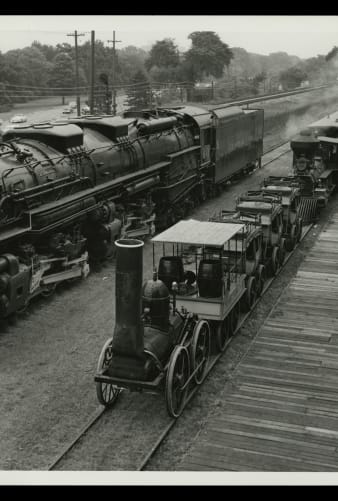

"Allegheny" and "Sam Hill" Locomotives and Replica "DeWitt Clinton" Locomotive and Coaches in Greenfield Village, 1956-1958
 Details
Details
"Allegheny" and "Sam Hill" Locomotives and Replica "DeWitt Clinton" Locomotive and Coaches in Greenfield Village, 1956-1958
Artifact
Photographic print
Date Made
1956-1958
Summary
Three generations of American steam locomotive development contrast dramatically at Greenfield Village. The replica of the 1831 DeWitt Clinton represents the earliest days. The 1858 Sam Hill characterizes locomotives of the mid nineteenth century. The mammoth 1941 Allegheny symbolizes the peak of steam locomotive technology. Larger size brought greater power, and the Allegheny reached the practical limits of both.
Place of Creation
Keywords
Object ID
EI.1929.P.B.12920
Credit
From the Collections of The Henry Ford.
On Exhibit
Not on exhibit to the public.
Related Objects
Get more details in Digital Collections at:
"Allegheny" and "Sam Hill" Locomotives and Replica "DeWitt Clinton" Locomotive and Coaches in Greenfield Village, 1956-1958
What is The Henry Ford?
The national attraction for discovering your ingenuity while exploring America’s spirit of innovation. There is always much to see and do at The Henry Ford.

